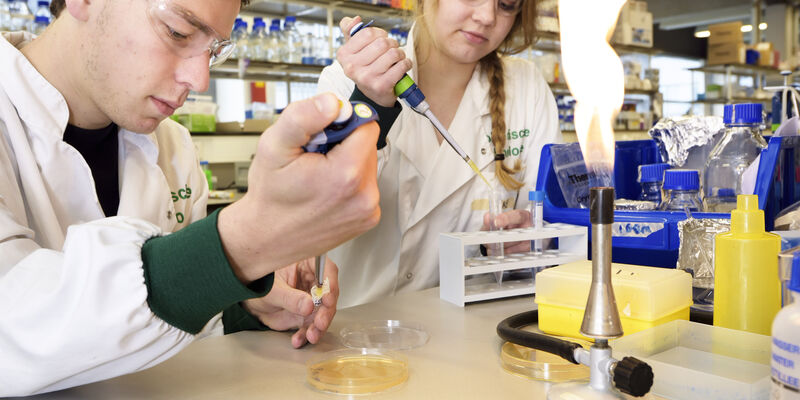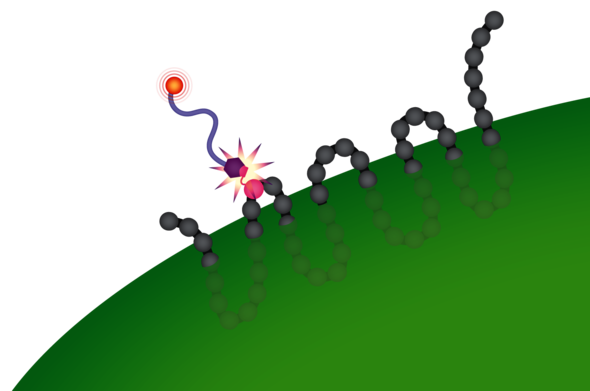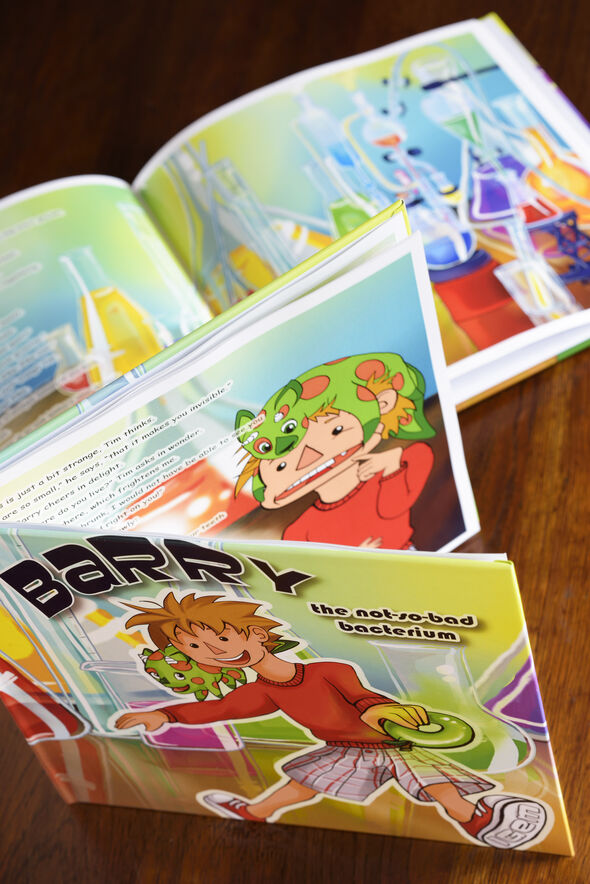
- Research , Student
- 31/10/2014
Barry the better bacterium
This weekend, Boston hosts the iGEM Giant Jamboree, an annual student competition for synthetic biology. The fourteen members of the TU/e iGEM team will attend, too. The team has created a ‘jacket’ for E. coli, improving the bacterium’s chances of survival – so it can make itself useful – in an industrial environment or inside the human body. And in the meantime, they also published a children’s book.
Bacteria have a bad reputation. They shouldn’t, say the members of the TU/e iGEM team. With a little help, bacteria can be amazingly beneficial to us. And that’s exactly what they want to contribute to with their iGEM project.
iGEM is an acronym for International Genetically Engineered Machine. It’s a competition for students where they are challenged to add new and useful characteristics to single-celled organisms (like bacteria) by employing the latest techniques from synthetic biology. This year, 245 student teams from around the world have registered for the competition.
On the initiative of the Institute for Complex Molecular Systems (ICMS), TU/e has entered the iGEM competition for the third time this year. “The first team had created a type of LED screen made from luminous yeast cells”, says Anke Boschman, who’s this year’s ‘head lab’. “And last year, the team designed a bacterium that finds tumors in the human body to secrete a protein that shows up on MRIs.”
A coating can make the bacterium resistant to hostile environments
Still, since iGEM is a student competition, mostly the teams only demonstrate their ideas should work in theory. After all, you can’t just inject the human body with bacteria, because they generate an immune response, which can result in nasty symptoms and/or the premature demise of the well-meaning bacteria.
The current iGEM team has searched for a solution to the latter problem, says Boschman. “Of course, it’s a shame last year’s wonderful idea can’t be implemented, because the bacteria will die. So, we wanted to try and find a way to create a coating that makes the bacterium resistant to hostile environments.”
Although initially they had decided on a coating that was to make E. coli invisible to the human immune system (a stealth bacterium), they soon moved on to a somewhat broader approach, ‘head modeling’ Glenn Cremers explains. “Bacteria and the human body are a tricky combination, which is why we decided to use a more general method: attaching molecules to the outer membrane (the ‘skin’, TJ) of the bacterium.”
The bacterium receives a protein jacket with hooks for molecules to attach themselves to
Their work has resulted in a ‘universal click system’ that enables all kinds of molecules to attach to the bacterium. Think of it as a protein jacket with hooks for the functional molecules to attach themselves to. The idea is that different kinds of molecules can be attached to the jacked easily, depending on what it’s needed for – a stealth jacket for in the human body, or a layer of catalysts for biochemical reactors, for example. “We’ve taken the first step towards creating a functional coating”, says Boschman. She says it’s up to others, within or outside TU/e, to further develop the idea.
Although neither the click chemistry nor the idea of coated bacteria is a new find, yet their combination is. According to supervisor dr.ir. Tom de Greef, the iGEM project might just lead to an interesting scientific publication. “There are plans to set up a few bachelor exam projects to that end.” He admired the dedication of the team members. “They really took the plunge and their efforts have resulted in something you can expect from fifth-year students, whereas they started the project in their second year and didn’t have any previous lab experience.” The only thing he regrets is that the team consisted of Biochemical Engineering students exclusively. “Next year, I’d love to see students from other departments join the team as well, just like our competition.”
In case their idea isn’t picked up within TU/e, then it might at next year’s iGEM: future contestants are free to use three proteins (two membrane proteins and an enzyme) created by the TU/e team. These so-called BioBricks will be included in the biological toolkit from which all iGEM teams are free to order items.
How do you get a bacterium to wear a protein jacket?
Bacteria are basically biological mini factories. If instructed correctly, they will produce the right proteins. If these are recognizable as membrane protein, the internal infrastructure of the bacterium will make sure those will be transported to the ‘skin’ of the bacterium. The instructions come from a piece of DNA (the blueprint of the protein). Those DNA pieces are the BioBricks that iGEM teams can order through the organization, says Glenn Cremers. “In Boston, they have a large freezer filled with pieces of DNA that can be shipped to your team. The DNA then has to be integrated in a plasmid.”
A plasmid is a ring-shaped piece of DNA. With the help of enzymes (proteins that have the ability to cut off and attach DNA), the piece of DNA can be integrated in the DNA ring. “Those enzymes can be ordered, too”, says Cremers. “They arrive within two days.” The next step involves getting the prepared plasmids to be absorbed by the bacterium. “By shortly heating the bacteria, the cell membrane becomes porous; that’s how we’ve managed to get the plasmid inside the bacterium”, Anke Boschman explains.
The bacterium uses that genetic information to create the desired membrane protein. The iGEM team uses a clever trick that enables a specific amino acid (pink in the illustration) to be absorbed by the protein. All molecules that are fitted with the correct molecular ‘hook’ can attach themselves to the bacterium’s surface through that amino acid.

Barry the not-so-bad bacterium
The iGEM teams are not only judged on their performance in the lab (and what they’ve presented on their websites). They also have to show their contribution to the social understanding of their area of expertise: synthetic biology.
It turned out to be a piece of cake for team member Minke Nijenhuis. With the help of a primary school teacher she created a children’s book for children aged 6-10. The book explains not all bacteria are bad, and that some even have superpowers thanks to synthetic biology.
The book’s protagonist is Tim, the son of a synthetic biologist. One day, he enters his father’s lab, where he’s shrunk to the size of a bacterium. He then meets Barry the Bacterium, and together they go to Petri City.
Nijenhuis created the illustrations in Photoshop and wrote the rhymes in the book. It’s been self-published (sixty Dutch, and forty English copies – so the judges in Boston can read it, too).

Discussion